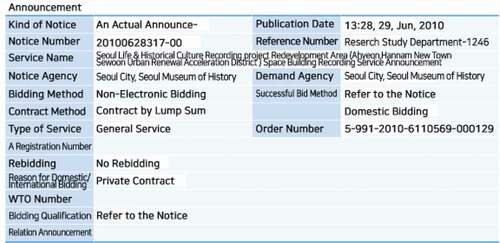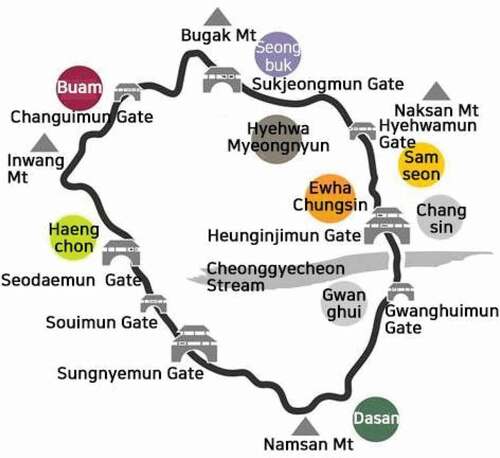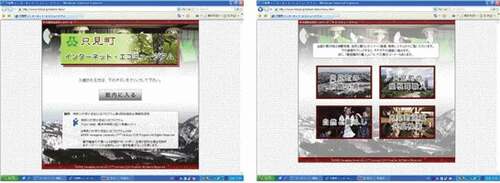ABSTRACT
Projects aimed at recording the unique values and characteristics of geographical regions, in terms of human, social, and economic aspects, have been increasing in number, along with plans to apply these data to future planning directions. However, such projects tend to develop gradually and in a uniform direction, contrary to its original intention. To address these problems, a survey method with consideration for regional characteristics is presented here. In addition, after local lifestyle is investigated, more effective procedures are needed to ensure that outcomes are actively utilized in local revitalization plans and that residents can access and use the data. This study proposes improvement directions for the South Korean context via examination of the progress, characteristics, and limitations of utilization of the results of such life-culture projects, based on a multiple case analysis of these projects in Seoul.
1. Introduction
1.1. Background and purpose of research
Life-culture and historical culture documentation projects have been increasing in South Korea, with plans to move in the direction of documenting the unique values and characteristics of each region in the country. These projects have proved their meaningfulness for the examination of regional characteristics in terms of humanistic, social, and economic factors. However, they have also shown a tendency to be standardized regardless of the location, which is unlike the original aim of capturing the unique qualities of each region. Developing and promoting methods that consider regional characteristics and can be utilized by local people is therefore necessary. The goal of the present research is to suggest improvement directions for life-culture and cultural history documentation projects in Korea.
1.2. Scope and method of research
After presenting background, this research covers current life-culture documentation projects in Seoul, conducted by the Seoul Museum of History and Seoul city authorities. An overview of the research methods is shown in . Cases examined in the present research were mainly life-culture documentation project reports conducted after 2007. Third, characteristics and limitations of life-culture documentation methods were drawn from the analysis, and improvement directions were suggested.
2. Background and current situation of life-culture documentation projects in Korea
2.1. Background
The city of Seoul has expanded and developed its downtown through radical methods, including continued redevelopment and the implementation of a government initiative, the New Town Project. This project was executed in 3 phases from 2002 to 2008, covering 26 districts of over 23.8 km2 total, as shown in . Its extent was 2.4 times larger than the residential redevelopment done in Seoul from 1973 to 2003 (Seoul Development Institute Citation2008). Seoul authorities performed a survey of conditions to identify economically unviable areas and to suspend projects of landowners requesting lifts of project-designated areas (The Seoul Institute Citation2013). However, these redevelopments also caused cultural vestiges to start to vanish, and as this vanishing progressed, life-history documentation projects emerged as a method of recording and preserving the lives and cultures of vanishing towns. With the goal of recording the ways of life of local folk and not just the material forms of old towns, life-culture documentation projects gained significance from how they explored the identity of human beings in the city and the various factors it is entangled with, reflecting how they prioritized experiences and cultures (Jang Citation2000). Analyses on the backgrounds and meanings of life-culture documentation projects in Seoul, as performed in past research, can be sorted into three types, as outlined in .
Table 1. Advanced research regarding life-culture documentation projects in Seoul
Figure 2. Status of the designation of the New Town Business District in Seoul in 2008
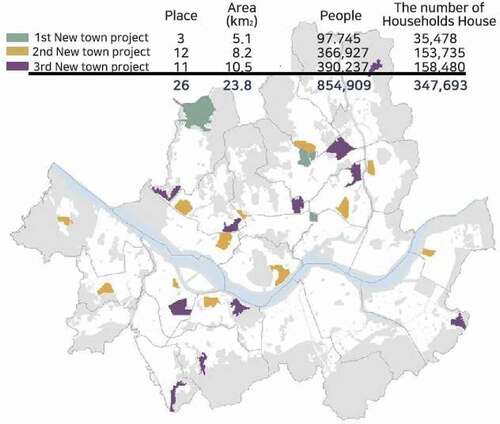
The first type of research on life-culture documentation study is case analysis of specific life-culture documentation projects. Eom and Park (Citation2010) mention that the life-culture documentation has relevance for movements focusing on preserving the human-life and natural vestiges effaced by the New Town Project and redevelopment plans.
The second type reveals the methodologies used in these documentation projects. Kim (Citation2017) reports on the emergence of documentation covering disbandment of space in regional spaces and communities, with drastic disbandment causing loss of identity of a region and its local people. The research also mentions that documentation projects can be effective in enhancing regional competitiveness and quality of life and can be utilized as a source of local content.
The third type is policy research. Work on establishing an Architectural City Space Archive Strategy (Seoul Development Institute Citation2008) suggests the concept of an architectural city archive and analyzes relevant policies, with proposed directions. The hypothesis that certain projects, including the New Town Project and related redevelopment in Seoul, made life-culture documentation projects important was verified through analyses of past studies. Despite ongoing research, however, none of the studies proposed a method of standardizing the progress of documentation projects. Thus, the goal of the present research is to propose improvement directions via examination of methods for evaluating progress, characteristics, and usability of output through an analysis of cases of domestic life-culture documentation projects.
2.2. Current situation of life-culture documentation projects in Korea
Extinction of the original form of a city caused by downtown development is not confined to Seoul; rather, it is occurring widely throughout the country. Thus, life-culture documentation projects are also being conducted by local governments outside of Seoul. One example is the Digital Local Culture Encyclopedia of Korea (Citation2020), a government-led national project digitalizing attempts to collect and analyze local cultures of regions throughout the country, inheriting the spirit of compilation projects from the Joseon Dynasty. The project, led by the Academy of Korean Studies, accomplished data compilation for 67 regions of the country by 2013, with a total of 167 regions expected to be covered by 2023. Some areas that have already been documented are listed in .
Table 2. Compilation of areas documented in the Digital Local Culture Encyclopedia of Korea (As of 2019)
2.3. Process of initiating a life-culture documentation project
Life-culture documentation projects are executed based on tenders listed on the Korea Online eProcurement System. Because the range of the present research covers only projects ordered by the Seoul city authorities and the Seoul Museum of history, the analysis here is limited to methods of tendering in the Seoul region.
The announcement agency selects service suppliers based on an examination of proposals. Evaluation criteria and scoring procedures may differ between cases. For life-culture documentation in the redevelopment areas of Ahyeon, Hannam New-town, and Sewoon Redevelopment Promotion Area, it was agreed in 2010 that 80 points would be assigned to technical evaluation and 20 points to cost evaluation. Technical evaluation here is composed of qualitative factors, for 60 points such as the execution plan; and quantitative factors, for 20 points, including business conditions, results of relevant projects, workforce situation, and credit rating. In contrast, cost evaluation, for 20 points, is evaluated via calculation of criteria after conclusion of the contracts.
The aforementioned case requires two criteria: the involvement of an architectural firm designated by Article 23 of the Certified Architects Act, and more than one “modern & contemporary construction record” executed by the nation, local governments, public institutions, or other private institutions in the 3 years after the announcement (excluding research investigation or simple contracts related to cultural properties). Most of the contracts are made via negotiation, and several negotiation criteria exist. First, proposals with over 70 points (technical + cost) are designated qualified. Second, the order of negotiation is in descending order based on score, with higher scores in technical evaluation being prioritized in case of more than 2 proposals with equal scores. Third, negotiations of second priority are omitted when a negotiation with prior order subject is made. Fourth, a negotiation of second priority is executed in case of a breakdown of negotiation with prior order subject. Fifth, the subject of the completed accommodation is selected as the contractor. A corresponding announcement for the project is then made, as shown in .
3. Current situation of life-culture documentation in Seoul
3.1. Status of the Seoul metropolitan government’s living culture record project
Although numerous life-culture documentation projects are proceeding nationwide, the present research focused on drawing characteristics from the examination of cases of life-culture documentation projects in Seoul overseen by the Seoul authorities and the Seoul Museum of history, and proposing further directions. Beginning with the Bogwang-dong sub-municipality in 2007, Seoul Museum of history Life-Culture Documentation Projects have been done annually, with regional progress as shown in . According to examination of a total of 32 regions from 2007 to 2018, only 5 cases were performed in the Gangnam regions, south of the Han River, whereas the rest of the examinations were executed in the Gangbuk regions, north of it. Ahyeon New-town, North Ahyeon New-town, Gajaeul New-town, and the Sewoon Redevelopment Promotion Area – imminent redevelopment areas – in particular appear to be the focal area of documentation projects. Given that the characteristics of life-culture documentation projects are based on an understanding of various perspectives, the projects were executed with the cooperation of various entities, including researchers from the Seoul Museum of history, universities, research institutes, and architectural firms. Collaborators are listed in . Meanwhile, copies of the book cover and table of contents for the documentation of the project are shown in , respectively.
Table 3. Companies that collaborated with the seoul museum of history on the life & cultural recording project
Figure 4. Indicators of accomplishment of regional survey on recording of life & historical culture by the Seoul Museum of History
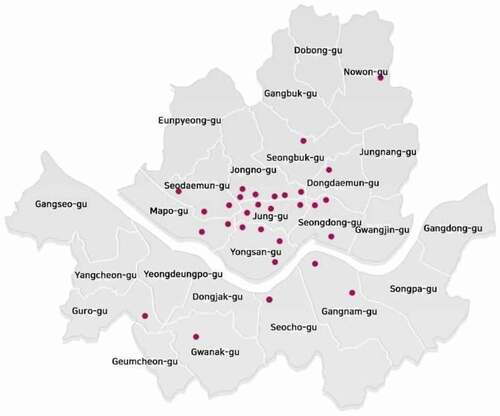
Figure 5. Book cover for the life & historical culture recording project
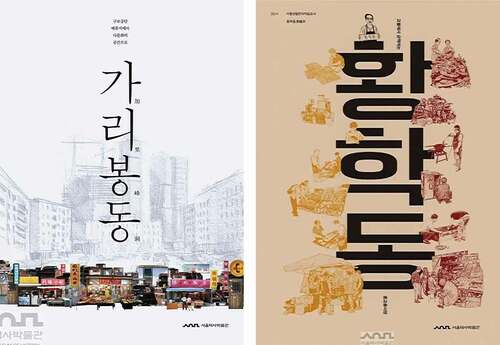
Figure 6. Table of contents of book on the life & historical culture recording project
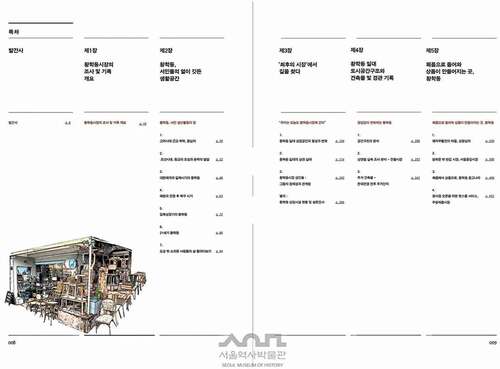
Examination of the Castle Village of the old capital, in Gangbuk, was done by the Seoul city authorities with the Seoul Museum of History, and was the center of the life-culture documentation project. A map of the Castle Village is shown in . Consisting of 7 sectors, the Castle Village (the village located near the fortress of Hanyang, now Seoul, in the old Joseon Dynasty, is called “Castle Village”) was examined and analyzed by Seoul city authorities from various perspectives – historic, social, economic, and architectural – to uncover its regional identity and inform the regeneration of the Castle Village, which began in 2017. Collaborators are listed in . A copy of the cover of the report is shown in .
Table 4. Companies that collaborated with Seoul City government on life & cultural recording projects
Figure 8. Cover of the report on the castle village life & cultural recording project
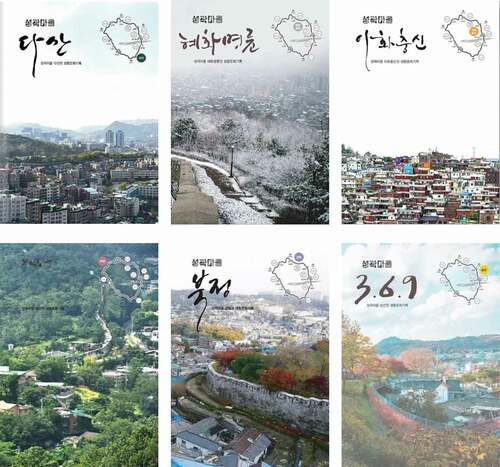
3.2. Composition of report on life-culture documentation and its limitations
Based on examination of 31 life-culture documents by the Seoul Museum of History from 2007 to 2018, the indexes of the documentation reports were divided into the following nine categories: survey overview, history, site, actual measurement, interviews and local life history, images of the region in the media, proposal, industrial characteristics, and photos (See ). Given that the early days of the projects were focused on regions on the edge of extinction, “industrial characteristics” were replaced by “proposals” for plans to remember regions soon to be demolished, and “industrial characteristics” were added around 2010 to record specific commercial facilities, including the Sewoon Plaza, the Dongdaemun Market, and Myeong-dong, as distinct characteristics. As an example, the composition and content of life-culture documentation projects conducted by the Seoul Museum of History are summarized in .
Table 5. Types of content in life & cultural recording projects
Table 6. Compositions and contents of the seoul museum of history’s life & historical culture recording projects
3.3. Limitations of life-culture documentation projects
The limitations of life-culture documentation projects had two main aspects: novel approach versus repetition of previous methods, and sharing with the public (as opposed to being limited to administrative reports and contexts).
3.4. Implications of the Seoul museum of history and Seoul metropolitan government's living culture record project through the analysis of the projects
This section derives characteristics of living-culture record projects based on survey methods, participants, and target sites of two representative projects.
First, the characteristics of the Seoul Museum of History’s Life and Culture Record Project are shown in the selection of the target sites. Most sites were long-established downtown areas north of the Han River whose former characteristics disappeared without a trace due to urbanization and rapid redevelopment policies. The documentation project carried out various records of physical, social, and humanistic elements and changes in Seoul’s urban structure in these areas.
The Seoul Metropolitan Government’s Living Culture Record Project focused on physical and social characteristics of the seven old Seongwak (fortress) areas, which are physically distant from one another but share characteristics.
4. Cases of documentation projects Overseas
4.1. Japan’ s eco museum
The case of a documentation project in Japan was examined to aid in developing suggestions and overcoming the limitations of the current documentation system. The project, “Systematization of Non-Terminal Data for the Research of Human Culture,” conducted by Kanagawa University from 2003 to 2007 as part of the COE Program spearheaded by Japan’s Ministry of Education, Culture, Sports, Science and Technology since 2002 with the aim of establishing a global research hub, may have been proposed in recognition of the importance of non-terminal data, including knowledge inherited non-verbally, shared culture within regions, and activities. The project categorized data by 5 types: iconicity, physical technique, landscape, oral history, and folktale. Descriptions of these categories are in .
Table 7. Composition of Japan’s “systematization of non-terminal data for the research of human culture”
As these factors reveal, this Japanese case seemed to investigate regionality in terms of microscopic factors. This is in contrast to the South Korean tendency of recording from a macroscopic perspective, including examination of changes in a region assessed via historical literature, changes in city structure via analysis of aerial photographs, and changes in regional centers of commerce via data analysis. The Japanese case helps us discover regionality and not just record the change processes in a region, by establishing a sharing system that goes beyond the systematization of collected data.
The following case is for the “Eco Museum” in Tadami Village, Minamiaizu District. Over the past 15 years, locals have participated in the process of collecting regional history, along with datafication of written materials, folktales, images, film, and environmental materials. The data were processed into cultural property reports and databases that were made available to locals. A screenshot of the website is shown in . In the domestic case, a documentary film, approximately 30 minutes in length and consisting of a regional introduction and interviews, and a final report processed into the form of an e-book were produced and shared with and used by locals. In contrast, in the Tadami project, separately managed data consisting of over 8,000 items collected by locals made it easy to approach local information. Data that have been voluntarily collected over a long period are also expected to grant more meaning to sharing (Im Citation2008).
4.2. UK community archives and heritage group
Starting with the National Archives of England, the establishment of local archives in the United Kingdom was completed by the 1960s; currently, there are more than 300 local archives in the country. Recently, attempts have been made to record and utilize these public record archives, along with labor, women’s, and social history, in all areas, including media, medicine, physical education, and daily history (Community Archives and Heritage Group, n.d.). Britain is also one of the countries where “community archives” activities are actively underway; the number of community archives registered with the Community Archive and Heritage Group, a support organization and comprehensive portal for community archives, stands at 491, and would be even higher if local arcades were included. This portal, shown in , seeks to document the histories of all forms of locality, occupation, ethnicity, faith, and other diverse communities. For these activities, the portal aims to promote community archive projects across the UK, support a standard framework that supports sustainability and accessibility of community records and record collection, and develop relevant training (Choi Citation2013).
Figure 10. Home screen of UK’s Community Archives and Heritage Group
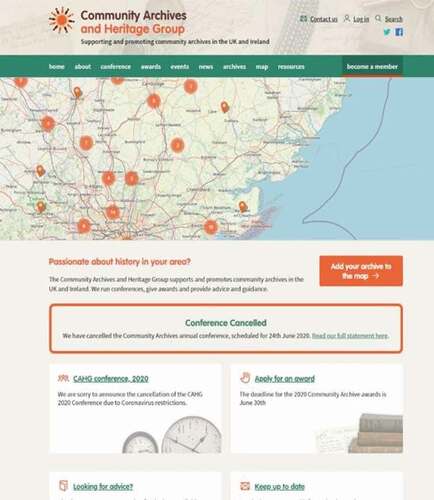
Aside from the many regional and local community archives, projects are being pursued as part of social policy to integrate diverse communities derived from the UK’s long history of immigration (Eom and Park Citation2010). Because information from each region is digitized and accessible through the Internet portal and anyone can easily browse and search, the subjects of historical records are coming to be of interest not just to experts but also to residents eager to record information on their own areas.
It is very significant that information in the region can be shared widely through this archive portal.
4.3. Implications of Overseas cases
The Eco Museum case in Japan is characterized by micro- and detailed life-culture recording projects, direct and leading participation of residents, the use of high-dimensional technology, detailed management, and high accessibility of archive materials. These characteristics lead to continuous management by residents. Similar efforts in Korea can address the current limitations of macro-view, indirect/passive participation by residents, and limited use of materials resulting from low accessibility.
The UK case is characterized by the high autonomy of the platform. As each region becomes the main body in its own cultural conservation, information is recorded in various voices that are not uniform, as anyone can access the recording platform to modify and add information. This method is meaningful in that it has given high accessibility to local records and disseminated them into everyday life. In contrast, most of Korea’s record-keeping projects are carried out in a uniform manner led by the public, in which local residents become passive, not active. Local residents tend to be left out of record-keeping, leading to a decline in their level of interest and engagement in record-keeping output. The UK case is thus a good example of how low access to recordings can improve the limitations of domestic business.
5. Conclusion: characteristics and limitations of life-culture documentation
The goal of the present research was to analyze and propose improvement directions for the current reports on life-culture documentation, to record and utilize regional characteristics. Its objective was to document unique regional characteristics and to draw usable output for locals. As the result of an analysis mainly of indices of current documentation project reports from the Seoul Museum of History and around the Castle Village, the following limitations of current life-culture documentation projects were found.
First, a proper method of analysis, considering unique regional characteristics, should be proposed. Origin, history, and development differ between regions executing life-culture documentation projects. Notwithstanding the necessity of discovering appropriate documentation methods for each given context, however, the reports have been written in standardized form. Discussions on deciding the proper methodology and direction should be conducted beforehand among the local governments ordering these contracts, the research teams, and the staff in charge. In case of the unavoidable use of an existing research methodology, supplementation with regional documentation and feedback should be required.
Second, appropriate methods for understanding and updating data should be discovered for each case. Project reports and indexing methods used for the data are rather standardized. Furthermore, these reports, especially the parts concerning history and theory, have been revealed as being difficult for the public to understand. If reports maintain the form summarized in , this may limit updates with newly discovered data. In the Japanese case reported here, over 8,000 items of data were gathered by locals, in a process still ongoing after over 15 years. This cooperative action suggests that the locals accepted the importance of this documentation, which led to increased effort in obtaining and updating the data. The importance of documentation is mainly that it ensured that records are suitably adjusted to regional characteristics and are steadily updated and utilized by locals, not just a static “simple document” of the present. The composition of documentation report should be discussed along with the direction of its utilization, in the context of project aims.
Third, diversity in post-analysis utilization of data should be proposed. In the current situation, public use of documentation is present but limited. Whereas the Seoul Museum of History published and shared the output of the documentation projects in the forms of publication, e-book, and film, the Seoul city authorities published and shared only the publication. A general sharing method can be effective for entities searching for data on a specific region for an already known purpose, but is considered to be ineffective for locals if they have limited ability to access the data. Thus, along with current sharing and utilization methods, measures that make it convenient for locals and the public to access the actual data they need should be proposed.
At this time, with over 10 years of life-culture documentation projects in areas targeted for urban regeneration vitalization and areas facing imminent redevelopment in Korea, earnest discussion regarding further documentation projects is required. The present research hopes and expects to motivate further improvement.
Acknowledgments
This study was developed by expanding and supplementing a paper presented at the 2020 General Assembly & Spring Annual Conference of AIK.
Disclosure statement
No potential conflict of interest was reported by the author(s).
Additional information
Funding
Notes on contributors
Ji-Won Yang
Ji-Won Yang is in the master's course in architecture at Soongsil University, South Korea. He has been participating as an assistant researcher for the A/Prof. Yoo Hae-yeon's research team since 2017. In 2017, he won the grand prize at the '72-hour Project,' an urban renewal contest that turned barren land in Seoul into a usable space, hosted by the Seoul Metropolitan Government and Hanwha Corporation. In 2019, he won the “Youth Architect Design Competition,” a competition for design of living infrastructure using low-rise residential area hosted by the Seoul Housing Corporation, and is currently working on projects related to urban regeneration and housing in Seoul. He participated in the ZEMCH International Design Workshop at Melbourne in 2018 and is joining as an assistant for the 2019 ZEMCH (Zero Energy Mass Custom Home). In 2021, he has been managing the welfare space for the residents in Yangcheon-gu, Seoul, through collaboration with SH corporation.
Hae-Yeon Yoo
Dr Hae-Yeon Yoo is an Associate Professor in the School of Architecture at the Soongsil University, Seoul, South Korea. She is an architect and teaches and researches in the fields of design and urban regeneration. From 2000 until 2008 she was a senior architect at the SAMOO architects & Engineers. She earned doctorate from Seoul National University in 2010 and then she studied urban regeneration laws and systems as a senior researcher at the Korea Land and Housing Corp. until 2012. As an educator, she has suggested and incorporated direction of the urban regeneration through the Local Connected Design. She is researching affordable housing and prefab design for the neighborhood regeneration part of an interdisciplinary research team funded by the National Research Foundation of Korea since 2012. She has been serving as a member of the committee in the fields of architecture, urban design and urban regeneration in diverse regions. For example, she serves as head of the urban regeneration center in Shinwol 3-dong that is the local level urban regeneration areas in Seoul. She is co-chairman of the village community committee in Dongjak-gu, Seoul and a member of the urban planning committee in Seocho-gu, Seoul. And she has been a urban regeneration committee in Gyeonggi Province. She is also a researcher for the Architectural Institute Korea and a consultant on direction in order to transform space in schools at the Ministry of Education.
References
- Yoo, G. H., S. H. Oh, S. K. Cho, and E. Y. Seong.2009. “The Policy Strategy for Buliging Architecture and Urban Space Archives in Korea.” AURIC. Seoul, South Korea.
- Choi, J.H. 2013. “Locality Documentation in Bolton and Its Effect on History Research.” The Korean Society of British History 35: 174–179.
- “Community Archives and Heritage Group.” 2020. https://www.communityarchives.org.uk/
- “The Digital Local Culture Encyclopedia of Korea.” 2020. http://www.grandculture.net/
- Eom, S. J., and S. H. Park. 2010. “Documenting Communities and Archiving Heritages – A Case Study of Incheon Chinatown Community Archive.” Proceeding of Annual Conference of Urban Design Institute of Korea 257–266.
- Im, J. H. 2008. “Systematization of Data on Japanese Life History and Its Building Archives.” Institute of Youngnam Culture, vol., no. 14: 129–162.
- Jang, S. H. 2000. “Local Culture Research and Anthropological Methodology.” Journal of Local History and Culture 2: 43–64.
- Kim, D. M. 2017. “Direction and Strategy of Regional Documentation.” Folklore Institute 35: 39–86.
- Kim, J. K. 2005. “The Meanings and Methods of the Construction of Peoples Everyday Life Histories Archives.” Journal of Local History and Culture 8, (1): 217–249. doi:10.17068/lhc.2005.05.8.1.217.
- “Korea ON-line E-Procurement System.” 2020. http://www.g2b.go.kr/index.jsp
- “Seoul City eBook.” 2020. http://ebook.seoul.go.kr/
- Jang, N. J., and J. S. Yang.2008. “Key Issues and Improvements of New Town Project in Seoul.” Seoul Development Institute. Seoul, South Korea.
- Jang, N. J., D. M. Maeng, S. H. Min, and Y. J. Kim.2013. “Analysis of Condition Surveys on Newtown and Redevelopment Project Cancelled Areas in Seoul.'”The Seoul Institute. Seoul, South Korea.
- “Seoul Museum of History.” 2020. https://museum.seoul.go.kr/archive/NR_index.do


